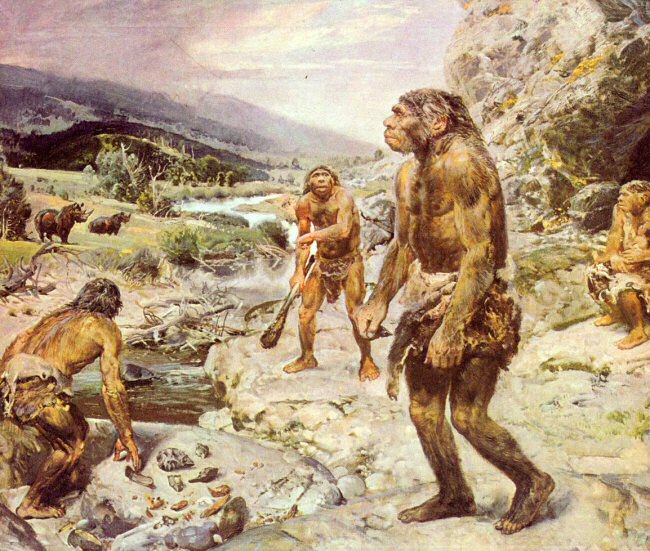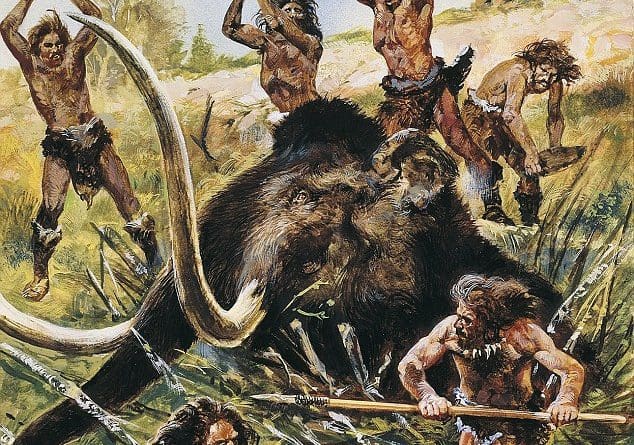

The Palaeolithic Age is the earliest period of Stone Age and hence it was also known as "Old Stone Age". The Palaeolithic age began with the appearance of Hominids, the first and earliest human ancestors, around about six million years ago and lasted until about 25,000 years ago. Therefore, Palaeolithic age is the longest period of the Stone Age. Old Stone age refers to the first use of stone tools by humans. Wood, bones and other materials were also be used but stone was shaped for the use as cutting tools and weapons.


Throughout this Palaeolithic age, humans were generally lived as nomadic hunter gatherers. The early part of Palaeolithic age began with the first species under the Homo genus named Homo Habilis evolved in Africa dated around 2.5 million years ago along with the earliest stone tools. They used tools for fishing and hunting the animals like mammoths, bears, elephants, deers and also gathered wild fruits. Their technique to make tools and objects out of stone was very simple by knocking the two stones together until they got small pieces from one of them and these pieces became the cutting objects to cut the meat off from the hunted animals for obtaining food and from its skins they made clothes for them.


The most significant discovery during the Palaeolithic age was the discovery of fire by Homo Erectus around one and an half million years ago. The controlled use of fire enabled by early humans to cook their food; to provide heat and warmth; to have a light source in their caves at night and also to frighten away the wild animals. Homo Erectus were the first human beings to leave Africa and moved to Europe and Asia as they formed in groups and moved from place to place by following the animals that they needed to hunt and looking for plants they could eat. The groups that they formed are called tribes in which the members of each tribe were belongs to the same family and they did not live a very long life because of the cold climate during the dawn of the last Ice Age and the common diseases which were spread between them. Eventually, they were made to believe in the supernatural forces which help them in hunting, stopped children from dying and women were more fertile to have more children.
Around 2,00,000 years ago, Homo Neanderthalensis were appeared in Africa and Eurasia, mainly inhabited in Europe by surviving extremely harsh climatic condition during Ice Age period which may have prompted the evolution of their stout, muscular frames. Neanderthal men buried their dead by including flowers with some burials.


Homo sapiens or the modern humans were emerged as a distinct species to evolve in Africa by about 1,00,000 years ago. Around 75,000 years ago, Toba super volcano situated in Indonesia had undergo a massive volcanic eruption which resulted to the volcanic winter by reducing the average global temperature by 3-5 degree Celsius for several ways which extended the duration of Ice Age for few more years. This massive environmental change accelerated differentiation of the isolated human populations, eventually leading to the extinction of all other human species except for the branch that became the modern humans. This druastic cold climatic change disturbed the surface environment globally by destroying the nature because of the excess formation of snow and ice all over the world which caused famine globally.
Because of famine and poverty, they switched to a marine diet consisting largely of shellfish. Subsequently, they had moved along the coast of Arabian peninsula towards India, Indonesia and Australia by about 65,000 years ago. By around 40,000 years ago, early humans who were survived in Europe had moved towards Middle East and Asia to settle down.
Comments
Post a Comment